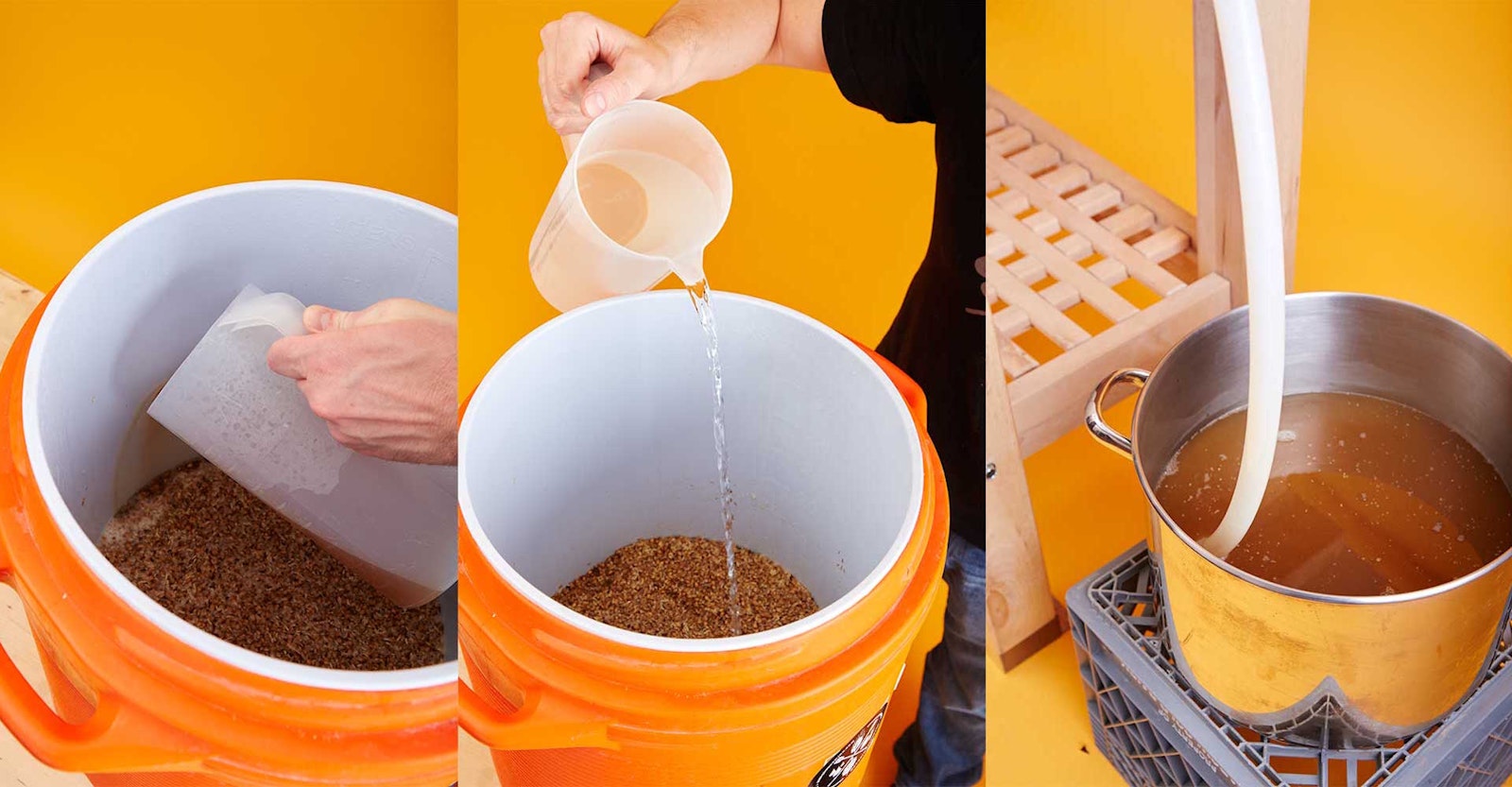Okay, so you’ve mastered starch conversion: your grist is milled to perfection, you’ve broken down all the clumps of dry grain, and the enzymes have done their job transforming that grain into malt sugars. Now, it’s time to sparge and collect the wort. Your lautering efficiency will determine how much sugar you can rinse from the grain bed.
Lautering Efficiency
As with starch conversion, you will find it worthwhile to understand exactly what’s going on with your lautering efficiency. The mash tun is a big matrix of wet, spent grain, full of dissolved sugars. As you sparge, the incoming water carries the dissolved sugars into the brew kettle. Depending on the temperature, conversion may still be taking place, breaking long-chain dextrins into shorter, more fermentable sugars. Many brewers do a formal mash out (raising the mash to 170°F/77°C for 10 minutes or so), or they sparge at a higher temperature to control this process.
The goal is to collect as much wort as possible, but you will also need to avoid leaching tannins from the grain husks. Temperature is one factor to consider—very hot sparge water (higher than mash out temperatures) will extract tannins. But the pH is also important because sparge water is usually more alkaline than the mash, and as pH rises, tannins will wash out along with the sugars.
There are two basic approaches to rinsing the grain: continuous (or “fly”) sparging and batch sparging. With the former, sparge water is added while the wort is drained into the kettle until enough water has been collected, or until the pH rises and gravity drops too low. Batch sparging breaks the water addition up into two or three separate steps with proportional volumes of sparge water and by fully draining the grain bed each time. From a pure malt optimization perspective, continuous sparging is the clear winner, but it’s more time consuming than batch sparging and requires more attention and effort.
Even if you choose the continuous sparging path, there are factors that affect your efficiency. The biggest one is how fast the wort is drained from the lauter tun. It turns out that taking it slow is ideal because the water has more contact time to absorb the sugars, and it reduces the chance of channeling. Channeling occurs when water follows a shorter path through the grain bed and never fully flows through the other sections. Another strike against speed is that it can compact the grain and create a stuck sparge, which is a major pain.
Even with a slow steady run-off, your efficiency can depend on the mechanics of how you separate grain from wort. A single collection point, such as a screened spigot, is less effective because sweet wort can remain at the lower edges most distant from the drain. A manifold (a pipe with slots or holes) is more efficient because it draws from a larger number of locations. The best solution, a false bottom, turns the entire base of the grain bed into a uniform set of collection points. This combination—fly sparging slowly with a false bottom—will get the most out of your grain.
Regardless of your sparge technique, you’ll likely notice that your efficiency drops somewhat as your grain bill grows. A barleywine made with a huge amount of grain will always be less efficient than a lighter session beer. This is mostly due to the higher concentration of sugars and the effects of water absorption in the grain. If your normal efficiency is decent, you can mitigate this somewhat by collecting more wort and planning for a longer boil to hit your target gravity. It will still be less efficient, but you’ll see some improvement.
Closing Thoughts
Improving your mash efficiency is a worthwhile goal, especially if you have problems hitting the gravity targets when brewing someone else’s recipe. Try out the ideas we’ve covered, but remember to aim for consistency. Even if you’re not as efficient as some other brewer, predictability will help you compensate.

